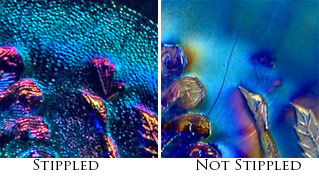Broken Arches
By Barb Chamberlain
The Broken Arches pattern was produced by the Imperial Glass Company in the early 1900’s. A dark iridescent punch set was pictured in the Spring 1911 Butler Brothers’ catalog, so we know that it dates at least to that time. It was known by the very descriptive Snap 14 name! A crystal set appeared in a 1927 Sears Roebuck catalog, so it was a fairly long- lived pattern.
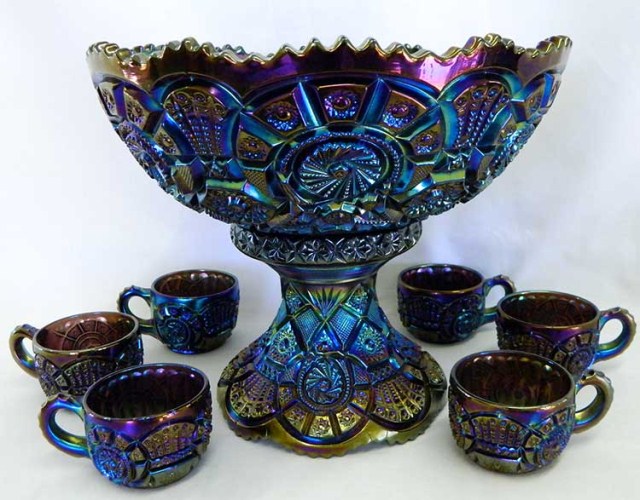
The usual round top shape for this punch set is shown above.
Punch sets were the only items produced in this distinctive pattern. It is fairly easy to identify this geometric pattern. It has six arches around the top of the bowl, and these arches all have distinctive divisions evenly spaced within each arch – hence broken arches. The base for the punch bowl also has the arches but they are in reverse of the punch bowl top arches, they are found at the bottom of the base. The cups feature three arches. The arches on all parts of the set nearly encircle a spinning star shape. Between the arches there is a fan type motif over a crosshatched bar over an hobstar.
Marigold and purple are the only known colors, although on Carnival Glass 101 there is a Broken Arches bowl that might possibly be vaseline. I don’t think Diane Fry saw this in person. It appears to have yellow glass coloring on the top edge of the base. I don’t believe a black light was lit in the photo. It would be fun to see this in person and to use a black light to check. Another interesting thing about the Broken Arches pattern is the interior of the bowl. Not all interiors on Broken Arches are the same. The most common interior design appears to be the Stippled Concentric Circles with Ribs. The stippling on the rings appears only on every other ring. The other interior patterns which appear to be found less often are Plain (no pattern), Concentric Rings with no stippling or ribs, and Smooth Concentric Circles with Ribs. Think how many different plungers were used to accomplish all these interiors.
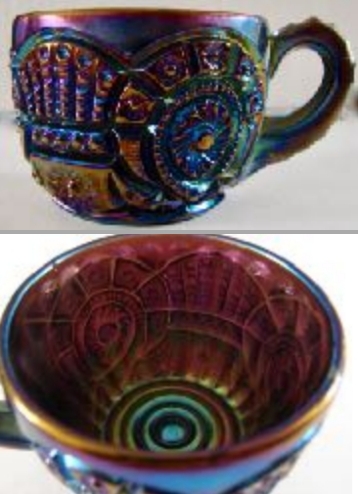
Shown above top is the exterior of the cup. You can see the “broken arches” and the spacing pattern. The bottom phot shows the interior of the cup.
I don’t know about all cups, but our cups all have Smooth Concentric Rings and Ribs with no stippling. I am unaware if other cups are all the same, or are there some plain cups. The base has no pattern on the underside of it, which I’m sure would be the same on all bases.
Most of the punch bowls are the round type, but there are a very few that have been ruffled. Three ruffled marigold sets have sold and only one ruffled purple one had sold in the past several years. These ruffled ones were referred to as fruit bowls, but I’m quite certain that they were made from the same mold as the round punch bowls. While the bowl was still malleable a finisher would use his wooden paddle to shape the ruffles.
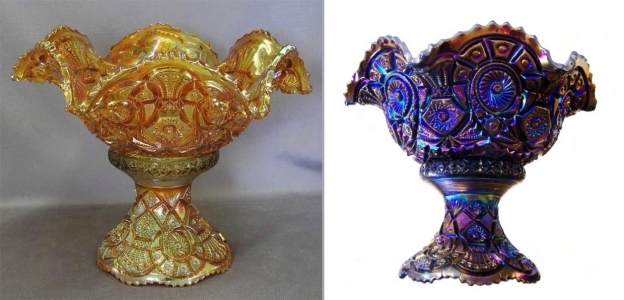
Above left, you see the unusual ruffled punch bowl. On the right is a purple ruffled one. These are unusual and make a great addition to a collection.
Most photos courtesy of Seeck Auctions.
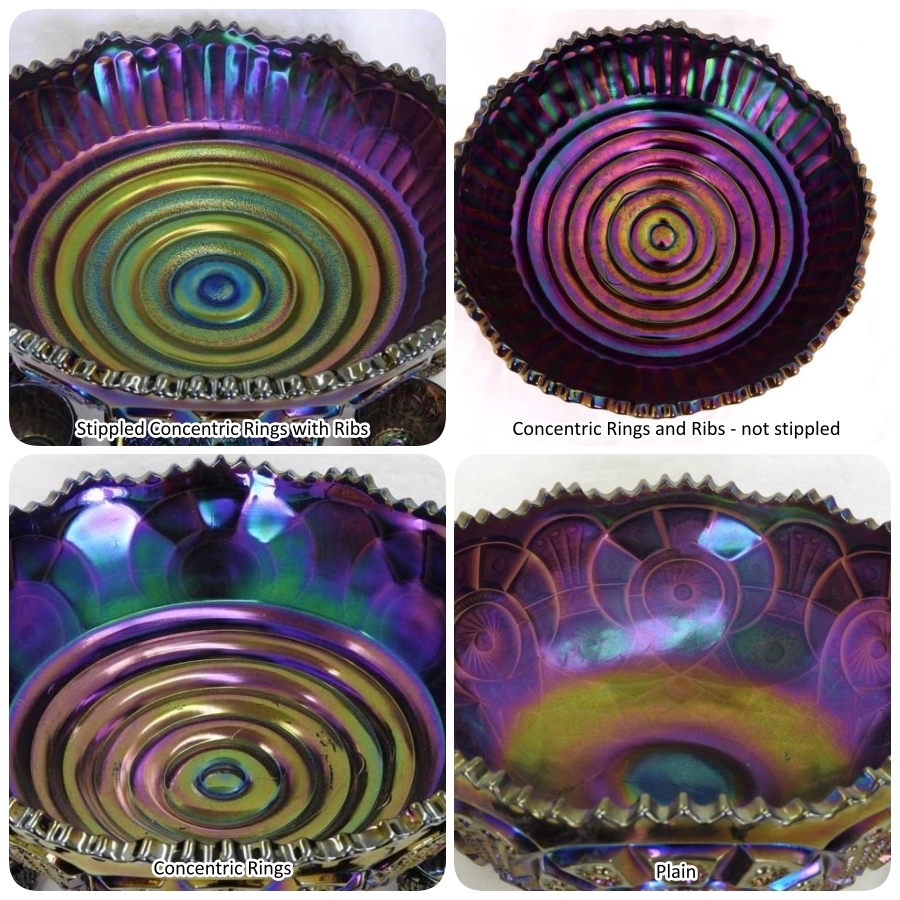
An interesting note on the punch set was the price that was listed on the original Butter Brothers’ catalog ad that sold for $1.25. Wouldn’t it be fun to find one for that price today?
If you have any other interior patterns on the punch bowls or the cups or happen to have a vaseline punch bowl, please send photos and explanations, if possible, to dbcham@iowatelecom.net or 124 E. Honey Creek Dr., Manchester, IA. I would like to include anything new in a future copy of The Carnival Pump.
This article first appeared in the ICGA Pump in the March 2020 issue and is reprinted with permission.

